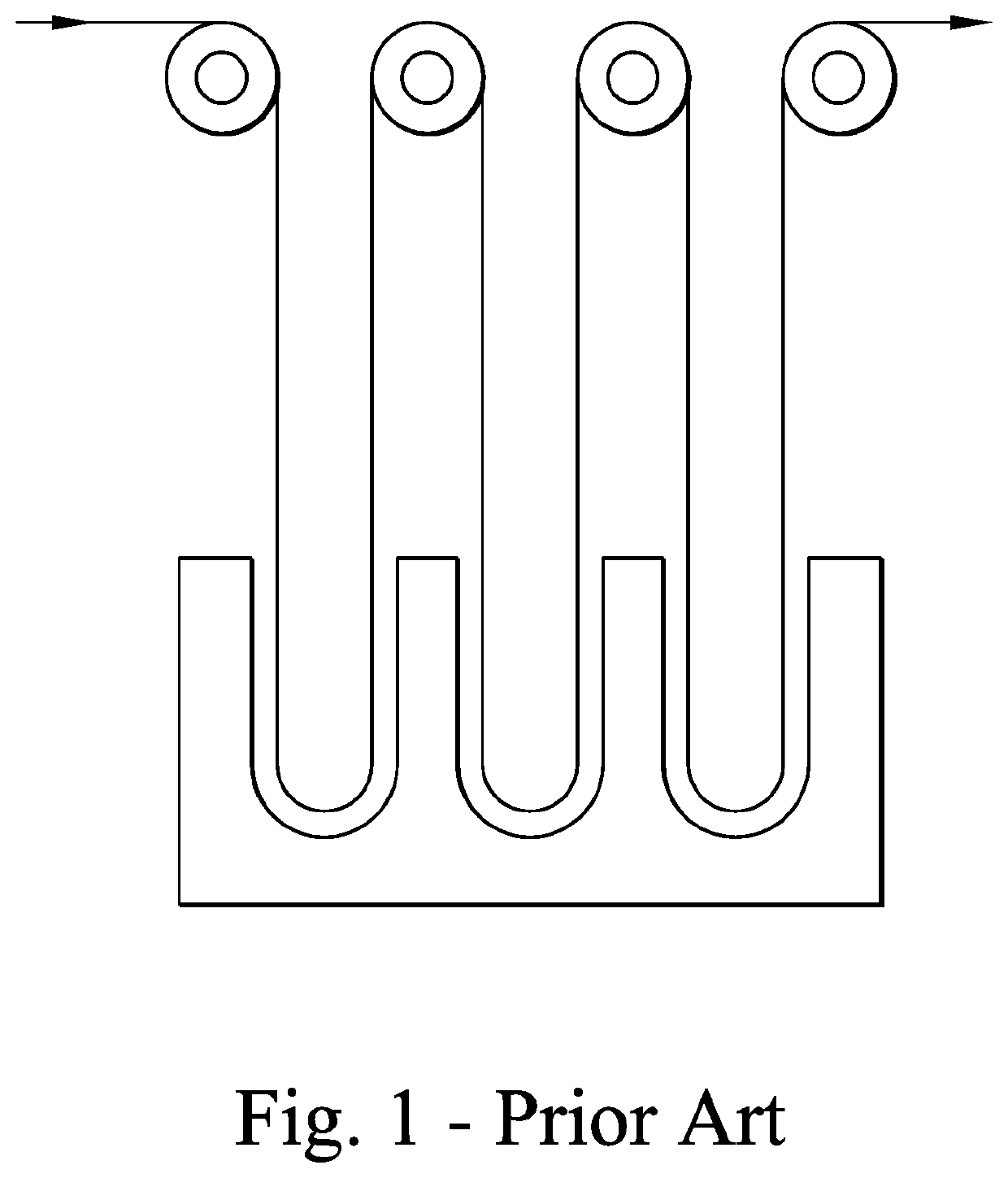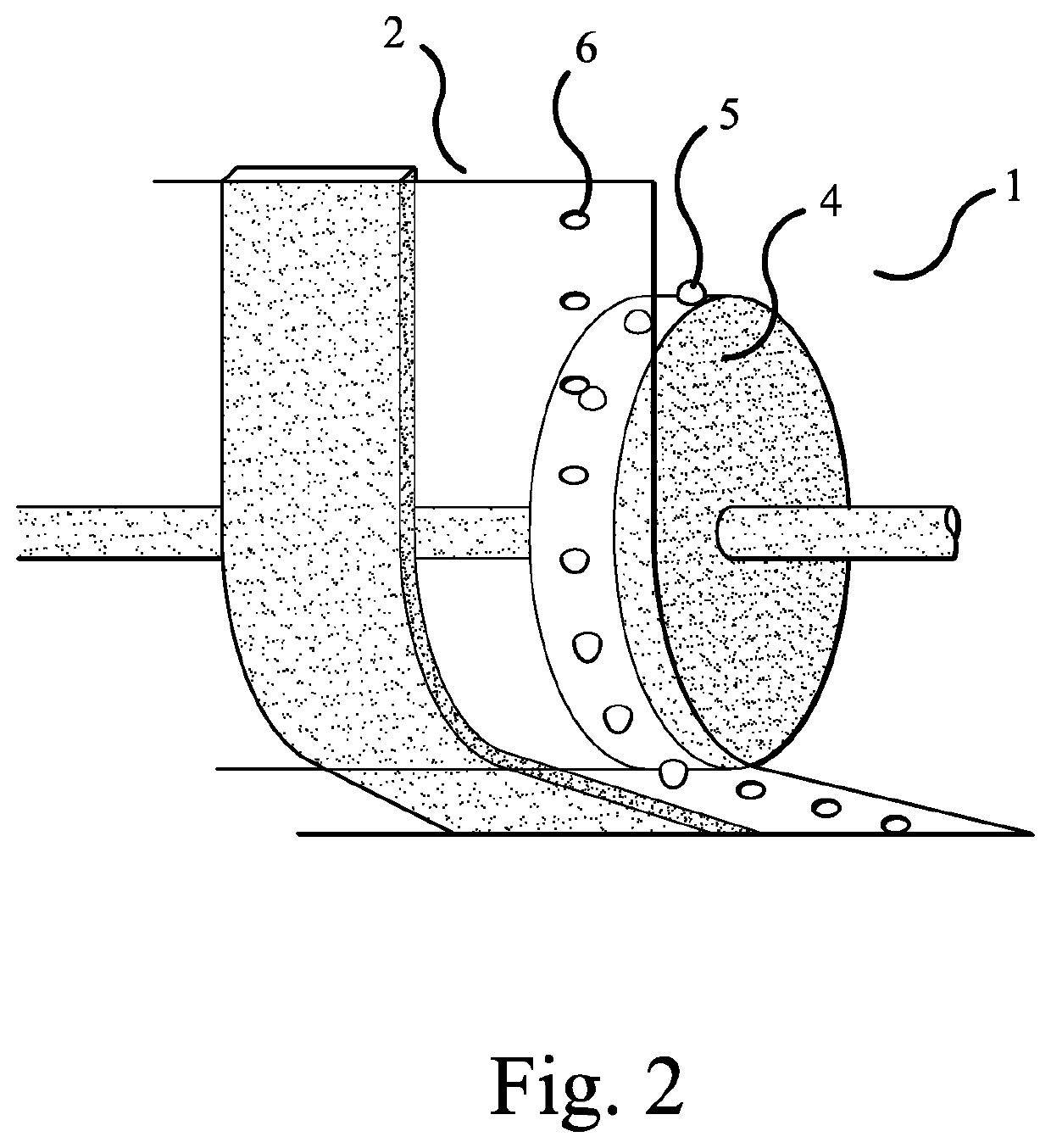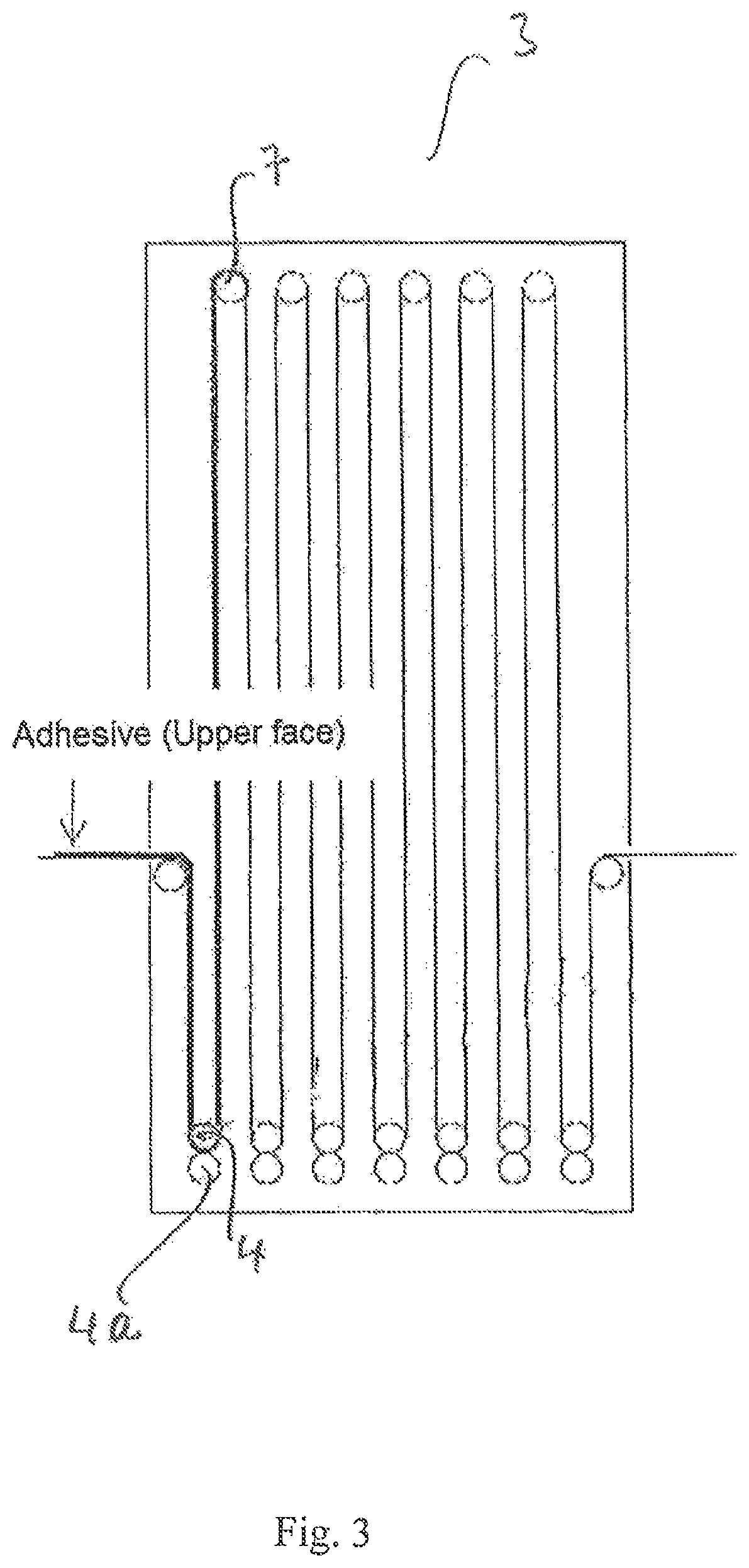Cross-linking method and associated device
a cross-linking method and cross-linking technology, applied in the direction of heat-activated film/foil adhesives, film/foil adhesives, transportation and packaging, etc., can solve the problems of increasing regulation of solvent use, dust and undesired particles, too strong curing, etc., to achieve superior shear resistance and high coating weight
- Summary
- Abstract
- Description
- Claims
- Application Information
AI Technical Summary
Benefits of technology
Problems solved by technology
Method used
Image
Examples
examples
[0303]1) Preparation of the Compositions
[0304]The compositions that appear in the table below are prepared by firstly introducing the tackifying resin (SYLVAREZ® TP2040HME) into a glass reactor under vacuum and heated to around 160° C. Then, once the resin is thoroughly molten, the silane-containing polymer (DESMOSEAL® S XP 2636 or GENIOSIL® STP-E30) is added.
[0305]The mixture is stirred under vacuum for 15 minutes, then cooled to 70° C. The catalyst (K-KAT® 5218 or TIB-KAT® 223) is then introduced. The mixture is kept under vacuum and continues to be stirred for another 10 minutes.
[0306]Compositions corresponding to examples 1 to 13 are described in table 1.
[0307]
TABLE 1adhesive compositionsTibSylvarezDESMOSEALIrganoxKkatKatTP 2040S XP2636STPE-301010Irganox 2455218223HME(% wt)(% wt)(% wt)(% wt)(% wt)(% wt)(% wt)1510.80.22462510.80.22463510.80.22464510 80.22465510.80.22466510.80.22467510.80.22468510.80.23459510.80.234510520.80.20.746.311520.80.20.746.312520.80.21.245.813520.80.21.24...
PUM
| Property | Measurement | Unit |
|---|---|---|
| temperature | aaaaa | aaaaa |
| temperature | aaaaa | aaaaa |
| humidity | aaaaa | aaaaa |
Abstract
Description
Claims
Application Information
 Login to View More
Login to View More - R&D
- Intellectual Property
- Life Sciences
- Materials
- Tech Scout
- Unparalleled Data Quality
- Higher Quality Content
- 60% Fewer Hallucinations
Browse by: Latest US Patents, China's latest patents, Technical Efficacy Thesaurus, Application Domain, Technology Topic, Popular Technical Reports.
© 2025 PatSnap. All rights reserved.Legal|Privacy policy|Modern Slavery Act Transparency Statement|Sitemap|About US| Contact US: help@patsnap.com



